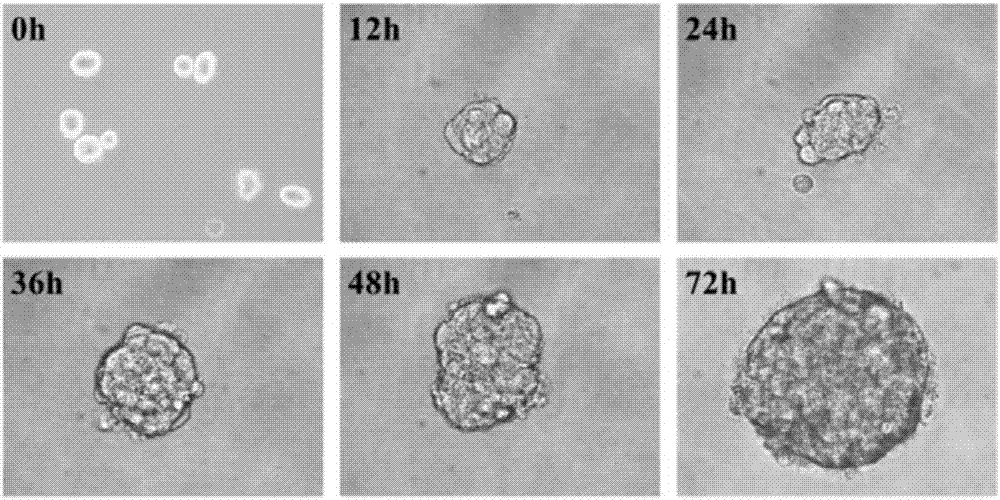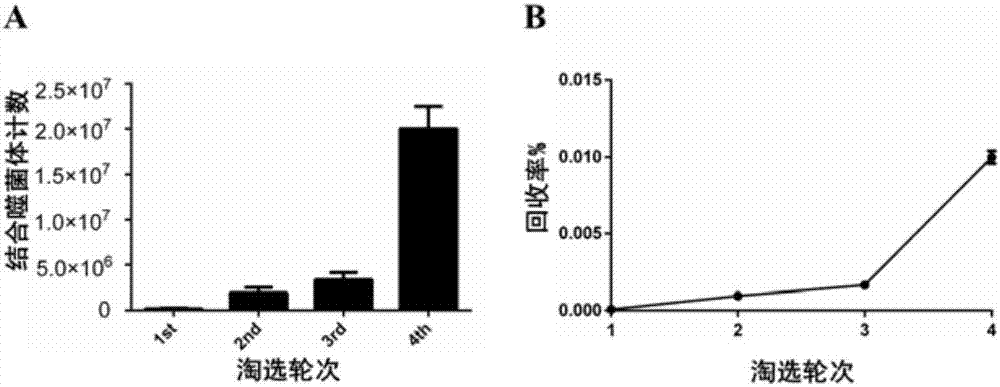A liver cancer microsphere cell surface specific targeting polypeptide, and a preparing method and applications thereof
A cell surface and peptide-targeting technology, which is applied to peptides, instruments, and analytical materials, can solve the problems of complex structure, large molecular weight, and high cost of tumor cells
- Summary
- Abstract
- Description
- Claims
- Application Information
AI Technical Summary
Problems solved by technology
Method used
Image
Examples
Embodiment 1
[0185] Example 1 A specific targeting polypeptide on the cell surface of liver cancer microspheres, the polypeptide is a heptapeptide, and its amino acid sequence is Asn-Thr-Gly-Ser-Pro-Tyr-Glu.
Embodiment 2
[0186] Example 2 The specific targeting polypeptide on the cell surface of liver cancer microspheres is a cyclic heptapeptide with a structural formula: cyclo-(Asn-Thr-Gly-Ser-Pro-Tyr-Glu).
Embodiment 3
[0187] Example 3 A method for preparing a specific targeting polypeptide on the cell surface of liver cancer microspheres, comprising the following steps:
[0188] (1) Culture of adherent cells and liver cancer microspheres: Liver cancer microspheres, HCCLM3 cells and LO2 cells were cultured according to conventional methods;
[0189] (2) Liver cancer microspheres cultured in HCCLM3 cells in suspension were used as target cells, and HCCLM3 cells and LO2 cells cultured on the adherent wall were used as adsorbed cells. Phage display technology was used for differential screening. The bottom LO2 cells were washed 3 times with PBS, added with BSA, blocked for 30 min in a constant temperature culture shaker at 37°C and 50 rpm, and then washed 3 times with PBST buffer; the original phage peptide library solution was drawn and mixed with PBS Mix well to obtain a mixed solution; add the mixed solution to adherent LO2 cells, and incubate in a constant temperature culture shaker at 37°C...
PUM
 Login to View More
Login to View More Abstract
Description
Claims
Application Information
 Login to View More
Login to View More - R&D
- Intellectual Property
- Life Sciences
- Materials
- Tech Scout
- Unparalleled Data Quality
- Higher Quality Content
- 60% Fewer Hallucinations
Browse by: Latest US Patents, China's latest patents, Technical Efficacy Thesaurus, Application Domain, Technology Topic, Popular Technical Reports.
© 2025 PatSnap. All rights reserved.Legal|Privacy policy|Modern Slavery Act Transparency Statement|Sitemap|About US| Contact US: help@patsnap.com



